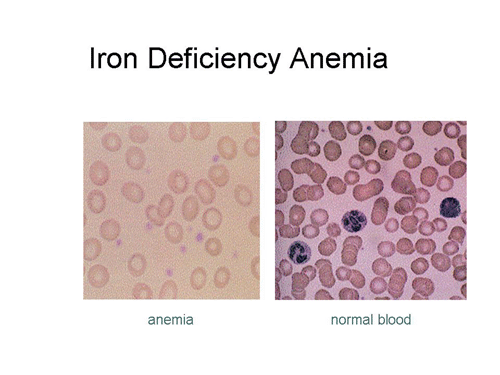 New Health Guide
New Health Guide
Anemia, or iron deficiency, is very common. In fact, it is considered the most widespread nutritional disorder that is seen in the world. There are many women and children who become affected with this in developing countries. However, there are just as many people affected in industrialized countries. Around 30% of the world’s population is affected with anemia. Many times this is due to the area having poor resources or being surrounded by infection diseases like HIV/AIDS or tuberculosis.
 When the red blood cell count in blood drops, then the person is said to have anemia. The American Society of Hematology states that a person’s age, any chronic diseases or viral infections can affect the red blood cell count. Anemia that happens due to the body not producing enough ironreferred to as iron deficiency anemia. This is very common in people. Iron is used in the body to help get oxygen to the muscles and tissues within the body, which is needed in order for the body to function properly. Thus, iron deficiency anemia is a serious condition that needs addressing.
When the red blood cell count in blood drops, then the person is said to have anemia. The American Society of Hematology states that a person’s age, any chronic diseases or viral infections can affect the red blood cell count. Anemia that happens due to the body not producing enough ironreferred to as iron deficiency anemia. This is very common in people. Iron is used in the body to help get oxygen to the muscles and tissues within the body, which is needed in order for the body to function properly. Thus, iron deficiency anemia is a serious condition that needs addressing.
When a woman is pregnant, she is more likely to develop iron deficiency anemia due to the body needing more iron to support the child the woman is carrying. Plus, most women do not have enough iron in their bodies stored up prior to becoming pregnant to support a fetus. This is especially true if the woman suffered with heavy menstrual period flows.
Children are prone to iron deficiency anemia when they have periods of growth in which their iron levels cannot keep up. However, this is not something that is going to happen within a few days. If a child is diagnosed with iron deficiency anemia, then chances are thathe has always been low on iron.
Most of those who are low on iron, rarely notice this until they start to show severe symptoms of iron deficiency anemia. The symptoms of this problem include:
If a child starts exhibiting symptoms of low iron, be sure to see a doctor. Low iron is not something that a person should self-diagnose, as simply taking more iron can cause issues with the liver and other aspects of the body.
Usually, you can meet your body’s iron needs by eating a balanced diet. However, there are times in which low iron or anemia can be brought on by other factors. Factors such as:
In order to treat an iron deficiency, most doctors recommend iron supplements. However, the doctor may also look into what is causing the low iron in the first place in conjunction with iron supplements.
These work best if taken on an empty stomach, but if they cause stomach upset, they can be taken with a meal. A person may be taking these for several months in order to get their iron back to a regular level.
Many times in order to offset the bleeding in the body a person may be given medications to help with heavy menstrual cycles, given medications to treat ulcers, or even have to go through surgery in order to remove polyps or the like that could be causing this bleeding.
Those who want to solve their anemia with their diet will find that there are several ways to do this. Foods that are rich in iron that a person will want to include are:
All major food groups should be represented on your plate in order to ensure a balanced meal. If you are anemic, then certain foods could be preventing you from absorbing iron. These foods are:
If you are low on iron, be sure to eat plenty of Vitamin C, to help with iron absorption.
Learn how to make vegetable juice for iron anemia via this video: